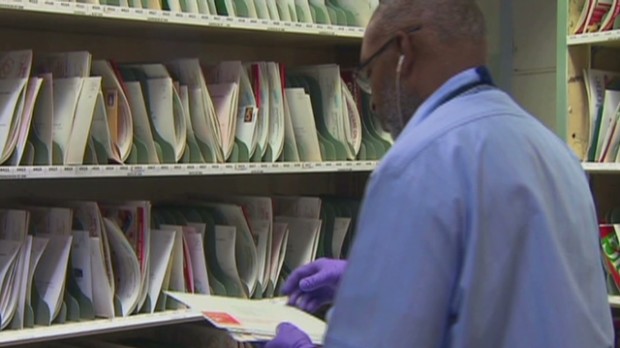DELAFIELD, Wis. (Stockpickr) -- Professional traders running mutual funds and hedge funds don't just look at a stock's price moves; they also track big changes in volume activity. Often when above-average volume moves into an equity, it precedes a large spike in volatility.
>>5 Stocks Insiders Love Right Now
Major moves in volume can signal unusual activity, such as insider buying or selling -- or buying or selling by "superinvestors."
Unusual volume can also be a major signal that hedge funds and momentum traders are piling into a stock ahead of a catalyst. These types of traders like to get in well before a large spike, so it's always a smart move to monitor unusual volume. That said, remember to combine trend and price action with unusual volume. Put them all together to help you decipher the next big trend for any stock.
>>5 Rocket Stocks to Buy Now
With that in mind, let's take a look at several stocks rising on unusual volume today.
NuStar Energy
NuStar Energy (NS) is engaged in the terminalling and storage of petroleum products, the transportation of petroleum products and anhydrous ammonia and asphalt and fuels marketing. This stock closed up 1.7% at $43.97 in Wednesday's trading session.
Wednesday's Volume: 1.13 million
Three-Month Average Volume: 425,063
Volume % Change: 195%
>>5 Stocks Poised for Breakouts
From a technical perspective, NS spiked modestly higher here with above-average volume. This stock has been uptrending strong for the last month and change, with shares pushing higher from its low of $36.15 to its intraday high of $44.81. During that uptrend, shares of NS have been consistently making higher lows and higher highs, which is bullish technical price action. That move has now pushed shares of NS within range of triggering a big breakout trade. That trade will hit if NS manages to take out its 200-day moving average at $45.32 to some past overhead resistance levels at $45.56 to $46.19 with high volume.
Traders should now look for long-biased trades in NS as long as it's trending above $42 and then once it sustains a move or close above those breakout levels with volume that's near or above 425,063 shares. If that breakout hits soon, then NS will set up to re-test or possibly take out its next major overhead resistance levels at $50 to $52.50.
Dr Pepper Snapple Group
Dr Pepper Snapple Group (DPS) is an integrated brand owner, manufacturer and distributor of non-alcoholic beverages in the U.S., Canada and Mexico, including 7 UP, A&W, Canada Dry, Clamato and Dr Pepper. This stock closed up 2.4% at $46.49 in Wednesday's trading session.
Wednesday's Volume: 2.68 million
Three-Month Average Volume: 1.31 million
Volume % Change: 135%
>>5 Stocks Poised for Breakouts
From a technical perspective, DPS spiked higher here right off its 200-day moving average of $45.34 with strong upside volume. This move also pushed shares of DPS into breakout territory, since the stock took out some near-term overhead resistance at $46.11. This move is quickly pushing shares of DPS within range of triggering another big breakout trade. That trade will hit if DPS manages to take out Wednesday's high of $46.82, and then once it clears some past overhead resistance at $47.24 to $47.90 with high volume.
Traders should now look for long-biased trades in DPS as long as it's trending above that first breakout level of $46.11 or above its 200-day at $45.35 and then once it sustains a move or close above those breakout levels volume that's near or above 1.31 million shares. If that breakout hits soon, then DPS will set up to re-test or possibly take out its 52-week high at $50.37. Shares of DPS could even tag $53 to $55 if it clears its 52-week high with volume.
Allegheny Technologies
Allegheny Technologies (ATI) is a specialty metal producer in the world. This stock closed up 1.9% at $33.42 in Wednesday's trading session.
Wednesday's Volume: 4.16 million
Three-Month Average Volume: 1.39 million
Volume % Change: 190%
>>5 Stocks Under $10 to Trade for Breakouts
From a technical perspective, ATI trended modestly higher here right above some near-term support at $30.50 with above-average volume. This move is quickly pushing shares of ATI within range of triggering a big breakout trade. That trade will hit if ATI manage to take out its 52-week high at $34.18 to some past overhead resistance at $35.94 with high volume.
Traders should now look for long-biased trades in ATI as long as it's trending above $32 or $31, and then once it sustains a move or close above those breakout levels with volume that hits near or above 1.39 million shares. If that breakout hits soon, then ATI will set up to re-test or possibly take out its next major overhead resistance levels $43 to $44.
Hexcel
Hexcel (HXL) develops, manufactures and markets composites, including carbon fibers, reinforcements, prepregs, honeycomb, adhesives and composite structures, for use in commercial aerospace, space, defense and industrial applications. This stock closed up 2.6% at $42.04 in Wednesday's trading session.
Wednesday's Volume: 1.43 million
Three-Month Average Volume: 473,743
Volume % Change: 220%
>>5 Hated Earnings Stocks You Should Love
From a technical perspective, HXL spiked higher here right above some near-term support at $40 with heavy upside volume. This stock has been uptrending strong for the last six months, with shares soaring higher from its low of $30 to its recent high of $43. During that uptrend, shares of HXL have been consistently making higher lows and higher highs, which is bullish technical price action. That move has now pushed shares of HXL within range of triggering a near-term breakout trade. That trade will hit if HXL manages to take out Wednesday's high of $42.57 to its 52-week high at $43 with high volume.
Traders should now look for long-biased trades in HXL as long as it's trending above $41 or $40 and then once it sustains a move or close above those breakout levels with volume that's near or above 473,743 shares. If that breakout hits soon, then HXL will set up to enter new 52-week high territory, which is bullish technical price action. Some possible upside targets off that breakout are $48 to $50.
BBCN Bancorp
BBCN Bancorp (BBCN), a bank holding company, offers commercial banking and, to a lesser extent, consumer financial services through its wholly owned subsidiary, BBCN Bank. This stock closed up 4.2% at $15.27 in Wednesday's trading session.
Wednesday's Volume: 1.27 million
Three-Month Average Volume: 415,740
Volume % Change: 231%
>>5 Dogs of the Dow to Stomp the Market
From a technical perspective, BBCN spiked higher here with strong upside volume. This stock has been uptrending for the last two months, with shares moving higher from its low of $13.05 to its recent high of $15.50. During that move, shares of BBCN have been consistently making higher lows and higher highs, which is bullish technical price action. That move has now pushed shares of BBCN within range of triggering a big breakout trade. That trade will hit if BBCN manages to take out some key overhead resistance levels at $15.50 to its 52-week high at $16 with high volume.
Traders should now look for long-biased trades in BBCN as long as it's trending above some near-term support at $14.50 or its 50-day at $14.04 and then once it sustains a move or close above those breakout levels with volume that hits near or above 415,740 shares. If that breakout hits soon, then BBCN will set up to enter new 52-week-high territory, which is bullish technical price action. Some possible upside targets off that breakout are $19 to $20.
To see more stocks rising on unusual volume, check out the Stocks Rising on Unusual Volume portfolio on Stockpickr.
-- Written by Roberto Pedone in Delafield, Wis.
RELATED LINKS:
>>5 Sin Stocks to Protect Your Portfolio
>>Do You Own These Blue-Chips? Sell Them!
>>4 Stocks Under $10 Making Big Moves
Follow Stockpickr on Twitter and become a fan on Facebook.
At the time of publication, author had no positions in stocks mentioned.
Roberto Pedone, based out of Delafield, Wis., is an independent trader who focuses on technical analysis for small- and large-cap stocks, options, futures, commodities and currencies. Roberto studied international business at the Milwaukee School of Engineering, and he spent a year overseas studying business in Lubeck, Germany. His work has appeared on financial outlets including
CNBC.com and Forbes.com. You can follow Pedone on Twitter at www.twitter.com/zerosum24 or @zerosum24. The leaves have turned and sentiment for MLPs appears to be following suit, as dealmaking reveals strong market appetite for income with a growth kicker.
The leaves have turned and sentiment for MLPs appears to be following suit, as dealmaking reveals strong market appetite for income with a growth kicker. Nanex Chart of Equity Trading after Chicago PMI Data on Feb. 28, 2013.
Nanex Chart of Equity Trading after Chicago PMI Data on Feb. 28, 2013. 





 No Saturday mail? USPS chief responds
No Saturday mail? USPS chief responds  Getty Images
Getty Images  Andrew Harrer/Bloomberg via Getty Images The U.S. Postal Service says it lost $5 billion over the past 12 months. It's the seventh straight year the agency has reported a net loss. Postal officials say the loss increases the urgency for Congress to let them end Saturday mail delivery and reduce payments for retiree health benefits. The Postal Service has struggled for years with declining mail volume and required payments of $5.6 billion annually in health care costs for future retirees. It has defaulted on three of those payments. Revenue from package delivery continued to grow, rising 8 percent last year. But that's not enough to offset losses in first class mail, which has been the post office's most profitable service.
Andrew Harrer/Bloomberg via Getty Images The U.S. Postal Service says it lost $5 billion over the past 12 months. It's the seventh straight year the agency has reported a net loss. Postal officials say the loss increases the urgency for Congress to let them end Saturday mail delivery and reduce payments for retiree health benefits. The Postal Service has struggled for years with declining mail volume and required payments of $5.6 billion annually in health care costs for future retirees. It has defaulted on three of those payments. Revenue from package delivery continued to grow, rising 8 percent last year. But that's not enough to offset losses in first class mail, which has been the post office's most profitable service. 
